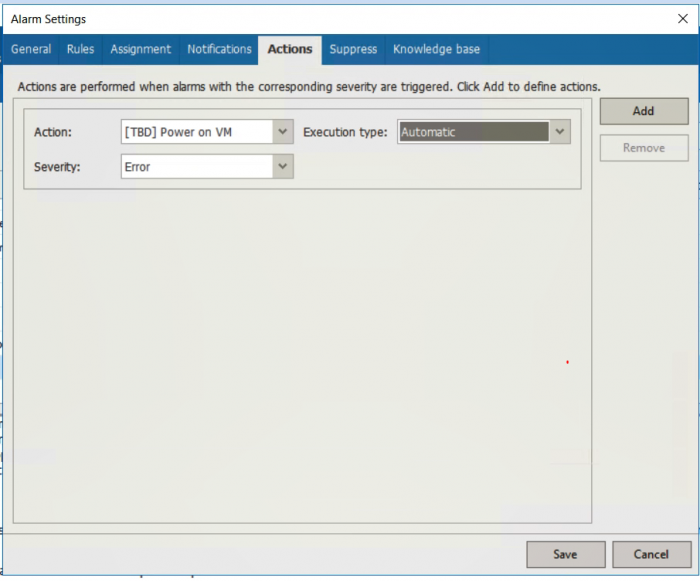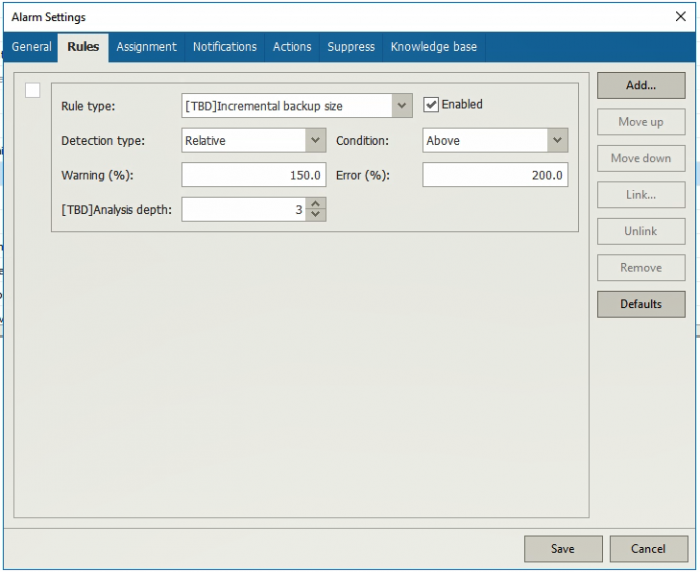How many of you geek out when reading the list of new features included in a release the size of Veeam Availability Suite v10? Like me, I’m sure many of you are faced with determining how you’re going to prioritize the order in which you’ll work each new capability into your daily backup routine. So, instead of barraging you with a list of new Veeam ONE features and enhancements, let’s ease into it by revisiting two of our more popular Update 4 capabilities — Veeam Intelligent Diagnostics and Remediation Actions — and discuss the enhancements we are making to these features.
In the 2019 Technology Spending Intentions Survey, when ESG asked businesses what their most important objectives were for their future digital transformation initiatives, the top response was to “become more operationally efficient.” In addition, 59% of the same respondents indicated that they planned to invest in more Artificial Intelligence and Machine Learning technologies in 2019 than they did in 2018. It’s clear— with shrinking budgets and labor forces and growing data centers — businesses are looking for new ways to leverage technology to complete more tasks with fewer resources. Leveraging Intelligent Automation is a helpful way to maintain peace of mind that your environment is optimized and operating at the level necessary to meet aggressive SLAs.
Intelligent Automation
We know that many of you have already been leveraging Veeam ONE’s built-in automation to remediate backup errors and configuration issues, as well as automatically detect issues and perform actions when an alarm is triggered. But since this is all still relatively new, let’s briefly review Veeam ONE’s capabilities and then discuss the enhancements made with v10.
Veeam Intelligent Diagnostics (VID) delivers the ability to intelligently manage data. With this, Veeam ONE installs a Veeam ONE agent on your backup server to analyze the data in backup server logs looking for common misconfigurations and issues that have already been flagged and identified by Veeam Customer Support. If VID detects an issue within the log, an alarm or signature will trigger and provide the information needed to streamline troubleshooting.
Also, utilizing the Veeam ONE agent is Remediation Actions. These allow you to set an action to occur once an alarm is triggered. To quickly remediate issues there are a number of pre-defined actions that can be set for the most popular alarms, and for the latter, those alarms that do not have a pre-defined action available, you have the ability to create your own actions through scripts. Both types of actions can be set to automatically happen when an alarm is triggered or to manually kick off based on your needs.
Veeam Intelligent Diagnostics
Veeam ONE v10 expands on these existing capabilities to help users better detect and automate error resolutions like they never have before. Veeam Intelligent Diagnostics adds the ability to analyze logs from not only the backup server, but additional backup infrastructure components including proxies and repositories. By being able to collect and analyze logs from these components, with the help of our support team, users can fix additional misconfigurations and issues that occur throughout the entire backup environment. Veeam Intelligent Diagnostics also adds the ability to analyze logs in multiple languages, expanding the set of useful signatures to customers from multiple regions. The last notable enhancement made is its ability to detect installed hotfixes on the Veeam Backup Server. If VID is scanning the logs from the backup server and detects an issue resolvable by a hotfix, it can accurately tell if that hotfix has been applied or not, allowing it to detect issues more precisely.
Remediation Actions
Today, the ability to set a Remediation Action is available to ensure a healthy data center and backup environment. This is especially helpful to IT departments giving them an extra “set of eyes” to monitor and quickly respond to data protection issues as they happen. In addition to the existing Remediation Actions that help automatically add a VM to a backup job, run a VeeamZIP, or even delete a snapshot, v10 adds the ability to automatically power on a VM. This action can be used if a machine in your environment unexpectedly powers off and becomes inaccessible. When setting this Remediation Action, you need to define the rule on the alarm. By default, the rule is preset with the following configuration (see the screenshot below), however, it can be configured a number of ways to meet your needs. Then, after defining the rule, you will need to set an action based on the severity of the alarm. This tells Veeam ONE if the alarm is triggered with an error, perform this action, or if an alarm triggers with a warning do this action instead. With the action in place, Veeam ONE will automatically power on the VM or provide the additional ability to run a PowerShell script based on the settings configured.

New alarms
Version 10 also introduces a number of helpful, proactive alarms that can additionally utilize Veeam ONE’s automation engine. Available within every alarm, is the ability to run a script as an action to help alleviate issues. Since Veeam ONE’s primary role within Veeam Availability Suite is to support Veeam backup environments, this latest set of alarms focuses on just that — ensuring a healthy backup environment. With v10, you can be alerted if a transaction log backup fails, informing you if your SQL or Oracle logs are not being truncated properly through the Transaction Log backup Failure alarm. This alarm doesn’t come with a predefined action available, but with it comes the ability to trigger a script to alleviate the issue. If you have a number of backup copy jobs running in your environment for disaster recovery purposes, the new Backup Copy Job RPO alarm will notify you if your backup copy jobs are not meeting required recovery point objectives (RPOs).
The figure above shows the rules you can set for this alarm. By default, these are set for you upon enabling the alarm, but you also have the ability to edit rules based on your needs. If you look closely at the figure, you can also see available the Actions tab in the alarm settings. This is where you can set some automation with this alarm.
Also, falling in line with our efforts to help customers proactively recognize and combat ransomware in multiple ways, the new Suspicious Increment Size alarm notifies you if one of your incremental backup jobs has grown abnormally in size, potentially indicating the presence of malicious malware.

This alarm is one of the smartest alarms that’s been added with the v10 release, because it analyzes previously created increments and compares them to the new one. If it is triggered in your environment, a couple different actions could have happened. First, it could indicate ransomware, which was previously mentioned, meaning ransomware has been installed and is changing many blocks of data, thus making an increment bigger than usual. A different case could be that an object has been added to the job unexpectedly, meaning a slower backup job and more space being occupied on the repository. The alarm can also notify you if an object was removed unexpectedly, meaning some important data hasn’t been backed up. With each of these cases, this alarm can be extremely beneficial in every environment, as it is notifying you that you need to take a closer look at your backup environment to ensure these changes were intentional. It also gives you the option to automate a resolution, manually triggered, or automatically, based on the alarm settings, putting to use Veeam ONE’s intelligent automation engine once more to ensure the Availability and ultimate health of your backup environment.
Continued enhancements for Veeam ONE
Building on the useful capabilities of Veeam Intelligent Diagnostics and Remediation Actions is just the beginning of what Veeam ONE v10 brings to your data center —learn more about v10 here. The ability to monitor and maintain a healthy backup environment and data center is Veeam ONE’s mission and will continue to add support for features and capabilities made within Veeam Backup & Replication. Try Veeam Backup & Replication and Veeam ONE together by downloading a FREE 30-day trial of Veeam Availability Suite today!



